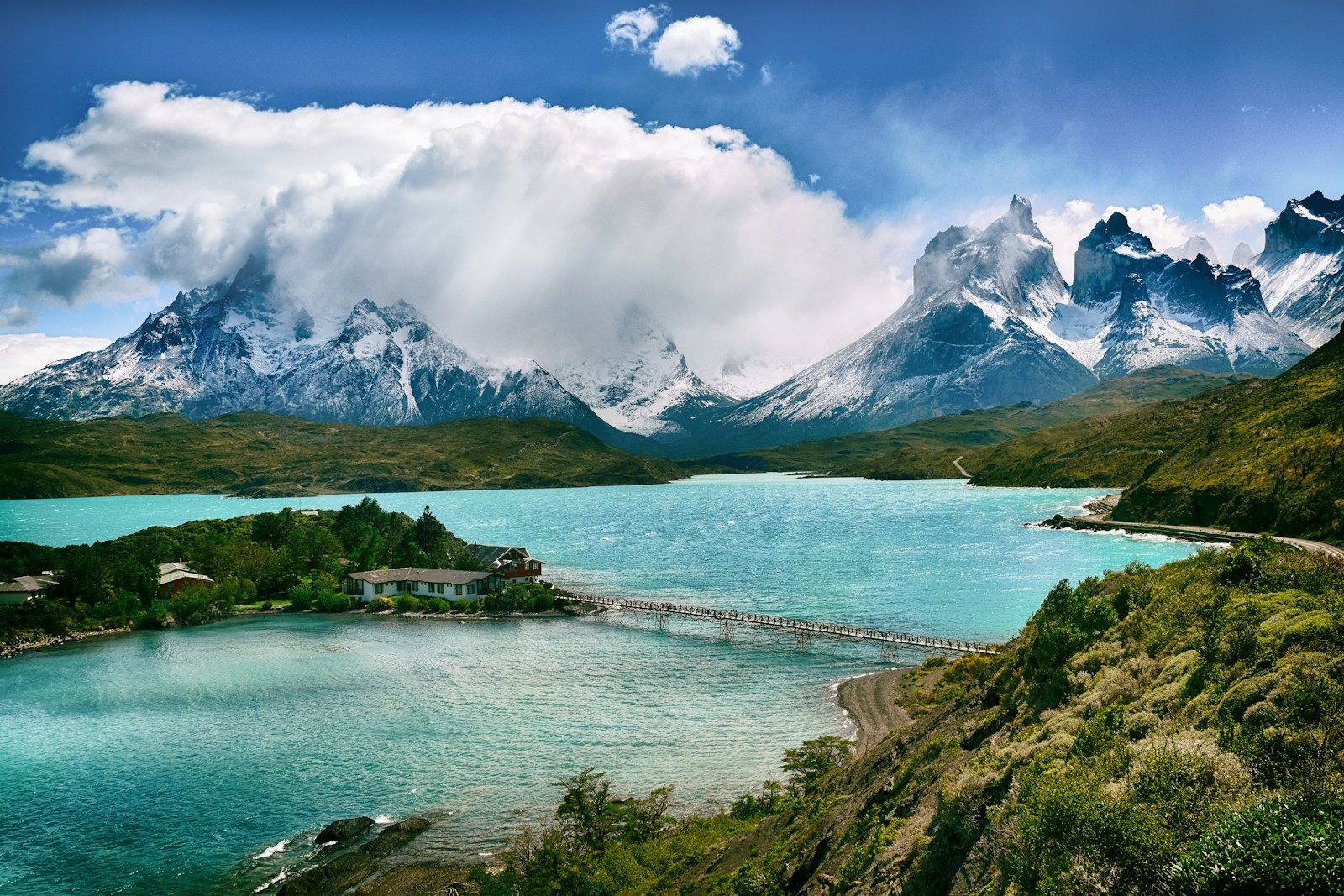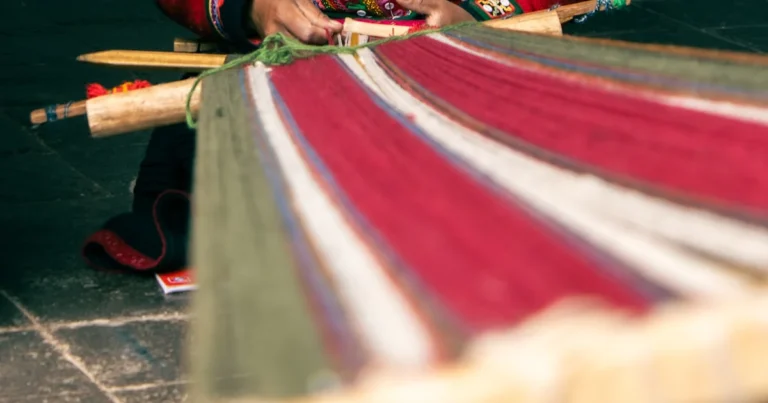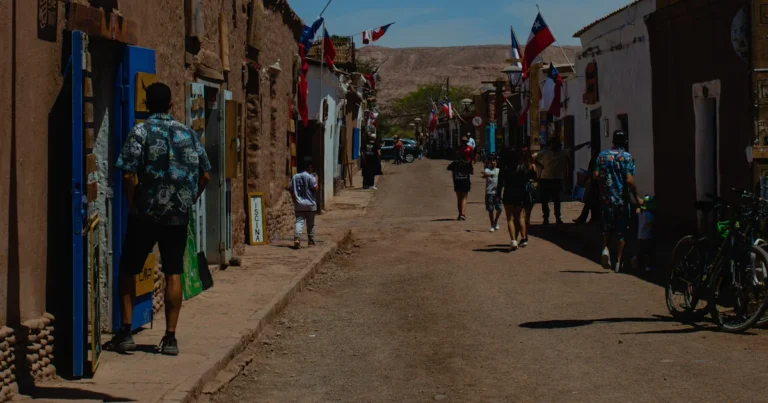Support our educational content for free when you purchase through links on our site. Learn more
10 Unique Cultural Experiences to Discover in Chile’s Rural Towns (2025) 🌄
Video: How Can I Experience Cultural Exchange In Central America’s Rural Villages?
When you think of Chile, your mind might race to the bustling streets of Santiago or the otherworldly landscapes of Patagonia. But wait—have you ever wondered what secrets lie tucked away in Chile’s rural villages and countryside towns? From ancient Mapuche ceremonies by misty lakes to lively rodeos echoing with huaso spirit, Chile’s rural areas are bursting with cultural gems that most travelers overlook.
We still remember the moment in a tiny village near Chiloé when a local grandmother handed us a handwoven trarilonko belt, explaining its symbolism in a language older than the Republic itself. Or the smoky aroma of a cordero al palo roasting slowly over boldo branches at a communal asado, where strangers become family by nightfall. In this guide, we’ll take you on a journey through 10 unforgettable cultural experiences that will immerse you in the heart and soul of rural Chile. Ready to trade the tourist trail for authentic adventure? Let’s dive in!
Key Takeaways
- Chile’s rural areas offer vibrant, living cultural traditions from indigenous Mapuche ceremonies to traditional huaso rodeos.
- Participating in local festivals, homestays, and artisanal workshops provides deep immersion beyond typical sightseeing.
- Rural markets and countryside gastronomy showcase unique flavors like artisanal cheeses and curanto cooking.
- Preparation is key: pack layers, learn basic Spanish and Mapudungun phrases, and plan transport carefully for remote areas.
- Sustainable tourism and respectful engagement ensure these cultural treasures thrive for generations to come.
Ready to uncover Chile’s countryside magic? Keep reading for insider tips, must-try dishes, and how to find hidden gems off the beaten path!
Table of Contents
- ⚡️ Quick Tips and Facts About Chile’s Rural Cultural Experiences
- 🌄 Exploring Chile’s Countryside: A Cultural Heritage Overview
- 🏘️ 10 Unique Cultural Experiences to Have in Chile’s Rural Villages and Towns
- 1. Traditional Chilean Rodeo: The Heartbeat of Rural Festivities
- 2. Mapuche Indigenous Ceremonies and Crafts
- 3. Artisanal Cheese and Wine Tasting in the Countryside
- 4. Participating in a Chilean Asado: More Than Just a Barbecue
- 5. Exploring Rural Markets: Handwoven Textiles and Local Produce
- 6. Learning Traditional Chilote Boat Building on Chiloé Island
- 7. Visiting Rural Churches and Colonial Architecture
- 8. Joining a Peasant Festival: Dance, Music, and Folklore
- 9. Homestays with Rural Families: Immersive Cultural Exchange
- 10. Harvesting and Cooking with Local Farmers
- 🛠️ How to Prepare for Cultural Immersion in Chile’s Countryside
- 🚗 Getting Around: Transportation Tips for Rural Chile
- 💬 Language and Communication: Navigating Spanish and Indigenous Dialects
- 🍽️ Must-Try Rural Chilean Dishes and Drinks
- 📸 Capturing Authentic Moments: Photography Tips in Rural Settings
- 🌿 Sustainable and Responsible Tourism in Chile’s Countryside
- 🛏️ Best Rural Stays: From Cozy Cabañas to Eco-Lodges
- 🔍 Insider Tips: How to Find Hidden Cultural Gems Off the Beaten Path
- 🧳 Packing Essentials for Your Chilean Countryside Adventure
- ❓ Frequently Asked Questions About Chile’s Rural Cultural Experiences
- 📚 Recommended Links for Deepening Your Chilean Rural Experience
- 🔗 Reference Links and Resources
- 🎯 Conclusion: Embrace the Soul of Chile’s Countryside
⚡️ Quick Tips and Facts About Chile’s Rural Cultural Experiences
- Best time to go: November–March (spring & summer) for festivals, harvests, and long daylight hours.
- Cash is king: Many villages lack ATMs; carry small peso bills and coins for empanadas, bus fares, and artisan markets.
- Spanish first, Mapudungun second: Basic greetings in both go a long way—locals beam when you say “mari mari” (hello) to Mapuche hosts.
- Dress like an onion: Layers! The same day can swing from 5 °C at dawn to 28 °C by lunch.
- Safety? We’ve wandered solo through Chiloé, Elqui, and Cajón del Maipo after dark—felt safer than most European hamlets. Under30Experiences backs us up: “You’ll feel quite safe in the small towns in Chile.”
- Connectivity: Entel and Movistar have the widest rural coverage; WOM is cheapest but patchy. Download maps.me offline before you leave the city.
- Siestas are real: Many mom-and-pop shops shut 1–4 pm—plan your shopping accordingly.
🌄 Exploring Chile’s Countryside: A Cultural Heritage Overview

Chile’s spine is the Andes, its feet the Pacific, and in between lies a patchwork of micro-cultures that most visitors never meet. We’re talking about huaso cowboys galloping through eucalyptus groves, Mapuche machis (shamans) blessing violet-scented fields, and Chilote grandmothers who still speak the language of shells and stars.
Why does this matter? Because rural Chile is the living archive of the country’s identity. While Santiago races toward Latin-America’s tech-hub future, the villages guard the stories, recipes, and rhythms that pre-date the Republic itself. If you’ve already scanned our mega-list of unique cultural experiences in Chile, think of this guide as the deep-dive into the campo edition.
🏘️ 10 Unique Cultural Experiences to Have in Chile’s Rural Villages and Towns
1. Traditional Chilean Rodeo: The Heartbeat of Rural Festivities
Forget the US-style bull-riding spectacle. In Rancagua’s medialuna (half-moon arena), two mounted huasos try to pin a young steer against a cushioned wall with balletic precision. The crowd roars, cueca music erupts, and someone passes you a terremoto (pipeño wine with pineapple ice-cream). We still can’t decide if it’s sport or poetry.
Insider hack: Arrive at 10 am, grab a sopaipilla breakfast, and ask to peek inside the tack room—you’ll see hand-tooled leather saddles that cost more than a small car.
| What to Know | ✅ Good | ❌ Not So Good |
|---|---|---|
| Atmosphere | Electric, family-friendly | Can feel long if you don’t understand rules |
| Photo policy | Wide-angle shots allowed | Flash during rides frowned upon |
| Accessibility | Ramps in newer medialunas | Dirt parking = heels sink |
👉 CHECK PRICE on:
- Authentic huaso boots: Amazon | MercadoLibre.cl | Official huaso association
2. Mapuche Indigenous Ceremonies and Crafts
We spent three days in Budi Lake with the Lefio family. One dawn, Abuela María invited us to a nguillatun prayer ceremony: yellow maize kernels tossed to the wind, drums echoing across the water. Afterward we learnt to weave trarilonko (silver-buttoned belts) using sheep wool dyed with michay berries. The finished belt now lives in my suitcase like a passport stamp.
Pro tip: Never photograph without permission; offer to exchange skills—we taught English numbers to kids in return.
👉 Shop Mapuche crafts on:
- Hand-spun wall hangings: Etsy | Amazon Handmade | Fundación Ñuke Mapu
3. Artisanal Cheese and Wine Tasting in the Countryside
Ever tried queso de cabra wrapped in avellana leaves while overlooking the Cachapoal Valley? At Familia Rossi’s micro-dairy (population of farm: 12 humans, 47 goats) you’ll pair citrusy goat cheese with cool-climate Sauvignon from their neighbour’s 2-hectare vineyard. No tour buses, no velvet ropes—just you, the goats, and a retired winemaker who swears the volcanic soil gives the wine a whiff of gunflint.
Budget Travel bonus: Bring your own tupperware; they’ll fill it with fresh quesillo at half supermarket price.
4. Participating in a Chilean Asado: More Than Just a Barbecue
Picture a cordero al palo (whole lamb on an iron cross) slow-roasting over boldo branches while guitars strum Violeta Parra songs. In Huentequé (VII Region) the entire village shows up—someone brings potatoes, another pebre salsa, kids chase dogs, and suddenly you’re in charge of the chimichurri because you once mentioned you like oregano. That’s the asado contract: everyone contributes, nobody clocks in.
Vegetarians welcome—grilled humita parcels and champiñones stuffed with cheese are standard.
5. Exploring Rural Markets: Handwoven Textiles and Local Produce
Saturday in Feria de Chimbarongo smells like eucalyptus smoke and ripe chirimoya. We watched 82-year-old Doña Irma weave a 60-strand reed basket in 12 minutes flat—her fingers a blur. Meanwhile, Mapuche honey vendors offered ulmo honey so fragrant it could make a bee blush.
Adventure Travel tangent: Rent a bamboo bike from the plaza and pedal 5 km to the reed-covered bridges—perfect for that drone shot.
6. Learning Traditional Chilote Boat Building on Chiloé Island
On Isla Mechuque, Don Darío still builds dalcas (wooden boats) using larch planks steamed in cow-hide vats. We spent an afternoon adzing (curved-blade carving) and learnt three things:
- Larch smells like pine-citrus when wet.
- Chiloé tides swing 6 m—timing matters.
- Boat builders sing sea-shanties to keep rhythm—join in, even if you’re tone-deaf.
Where to stay:
- Palafito Hostel (stilt house): Booking.com | Hostelworld | Palafito Hostel Official
7. Visiting Rural Churches and Colonial Architecture
UNESCO-listed Church of Santa María de Loreto in Achao (built 1730) is held together by wooden pegs and prayers. Inside, ceiling beams are painted with indigenous symbols—a secret handshake between Jesuit and Mapuche worldviews. Arrive at 7:30 am when sunbeams hit the altar; you’ll have it to yourself except for the caretaker’s cat.
Photography tip: Use ISO 1600 max—dim interior, flash forbidden.
8. Joining a Peasant Festival: Dance, Music, and Folklore
Every February the Festival de la Vendimia in Curicó turns vineyards into open-air dance floors. We learnt the cueca (national dance) from a 10-year-old who corrected our footwork with the seriousness of a drill sergeant. Spoiler: by midnight you’ll be waving a pañuelo and stomping dust clouds with grandmothers.
Pack: Red hankie (any colour works, but red photographs best).
9. Homestays with Rural Families: Immersive Cultural Exchange
Through Fundación Ruca Kuré we stayed with the Cáceres family in Liucura Valley. Tasks: milk cows at 6 am, make sopaipillas with chancaca syrup, chase escaped piglet named Carlito. Payment? A heartfelt “gracias” and a hand-written recipe book we still use.
Budget Travel hack: Offer English practice for kids—families often waive board in exchange.
10. Harvesting and Cooking with Local Farmers
In March the Ligua Valley smells like fresh basil and ripe tomatoes. We joined Doña Gladys to pick 90 kg of tomatoes before 9 am, then stirred cauldrons of pebre over eucalyptus fire. Lunch: charquicán stew scooped with freshly slapped tortillas. Food & Drink nirvana.
Sustainable bonus: Bring biodegradable soap—they’ll love you for it.
🛠️ How to Prepare for Cultural Immersion in Chile’s Countryside
- Download the SERNATUR rural stays PDF — lists vetted homestays.
- WhatsApp groups > Email—rural hosts reply faster to voice notes.
- Gift etiquette: Bring local honey from your home country; Chileans are curious about foreign flavours.
- Health: Pack Trek-type water filter—well water is safe but mineral-heavy.
🚗 Getting Around: Transportation Tips for Rural Chile
| Mode | Best For | Drawbacks |
|---|---|---|
| Rental 4×4 | Remote Andean crossings | Gravel roads void some insurances |
| Buses (Pullman) | Cheap, comfy | Limited to towns >1 000 inhabitants |
| Shared colectivos | Door-to-door | Depart only when full—bring patience |
👉 Shop rental cars on:
- Suzuki Jimny 4×4: RentalCars.com | Expedia | Suzuki Chile Official
💬 Language and Communication: Navigating Spanish and Indigenous Dialects
- Chilean Spanish drops final “s”—“¿Cómo estái?” = ¿Cómo estás?
- Mapuche basics:
- Mari mari – Hello
- Chaltu mai – Thank you
- Google Translate’s camera works offline for Chilote Spanish menus—download Spanish pack.
🍽️ Must-Try Rural Chilean Dishes and Drinks
| Dish | Region | Vegetarian? |
|---|---|---|
| Curanto | Chiloé | ❌ (shellfish + pork) |
| Tomaticán | Central Valley | ✅ if you skip beef |
| Mote con huesillos | Nationwide summer drink | ✅ |
Pro tip: Ask for “pebre sin ají” if you’re spice-shy—pebre salsa can pack a jalapeño punch.
📸 Capturing Authentic Moments: Photography Tips in Rural Settings
- Golden hour is 7:30–8:30 am and 7–8 pm in summer—sunsets last forever.
- Ask before portraits—offer to WhatsApp the photo; villagers love profile pics.
- Gear: Fujifilm X-T30 + 23 mm f/2 is compact, discreet, weather-sealed.
🌿 Sustainable and Responsible Tourism in Chile’s Countryside
✅ Refill, don’t buy plastic—most plazas have potable water taps.
✅ Buy directly from artisans—skip middlemen; prices same, income doubles for makers.
❌ Avoid horse-drawn carts in touristy towns—many horses are overworked; opt for bike taxis.
🛏️ Best Rural Stays: From Cozy Cabañas to Eco-Lodges
| Name | Vibe | Wi-Fi | Closest Town |
|---|---|---|---|
| Ruca Anay | Mapuche dome, wood-stove | Spotty | Temuco |
| El Mirador de Chiloé | Stilt cabin, king tide views | Yes | Achao |
| Refugio del Cajón | Off-grid adobe, star deck | No | San José de Maipo |
👉 CHECK PRICE on:
- Ruca Anay dome: Booking.com | Airbnb | Ruca Anay Official
🔍 Insider Tips: How to Find Hidden Cultural Gems Off the Beaten Path
- **Follow the smell of eucalyptus smoke—usually leads to a roast or pottery kiln.
- **Look for hand-painted wooden signs—“Se vende miel” = local honey, often sold from a kitchen window.
- **Tuesday is market day in most pueblos—skip weekends for authentic vibes.
- **Ask the bus driver where they eat—drivers know $3 lunches tourists never find.
🧳 Packing Essentials for Your Chilean Countryside Adventure
- Layered clothing (fleece + windbreaker)
- Power bank—rural power cuts love sunset hour
- Drybag for boat rides in Chiloé
- Spanish cheat-sheet laminated—cowboys don’t do soggy paper
🎯 Conclusion: Embrace the Soul of Chile’s Countryside
So, are there truly unique cultural experiences to have in Chile’s rural areas? Absolutely—and then some! From the rhythmic hoofbeats of the traditional Chilean rodeo to the sacred Mapuche ceremonies by misty lakes, from sharing a smoky cordero al palo with a village to weaving your own trarilonko belt, the countryside is a treasure trove of living heritage.
Our adventures with the Lefio family and the Rossi micro-dairy showed us that rural Chile is not just a place but a state of mind—one that embraces community, tradition, and nature in a way the cities can’t replicate. Whether you’re harvesting tomatoes at dawn or dancing the cueca under starlit skies, you’ll find yourself woven into a story centuries old, yet vibrantly alive.
Is it all perfect? Not always. Some rural roads are rough, some wifi is spotty, and cultural nuances require patience and respect. But that’s part of the magic—travel here is a dialogue, not a checklist. We wholeheartedly recommend embracing the unexpected, saying “yes” to invitations, and carrying a spirit of curiosity.
Ready to trade the tourist trail for a genuine Chilean cultural immersion? Your adventure starts in the campo—and trust us, it’s worth every dusty step.
📚 Recommended Links for Deepening Your Chilean Rural Experience
Looking to gear up or dive deeper into Chile’s rural culture? Here are some handpicked resources and products we love:
- Traditional Huaso Boots:
- Mapuche Handwoven Crafts:
- Ruca Anay Dome Stays:
- Chile Travel Guide Books:
- Rental Cars for Rural Chile:
❓ Frequently Asked Questions About Chile’s Rural Cultural Experiences
What traditional festivals can I experience in Chile’s rural villages?
Chile’s rural calendar is peppered with vibrant festivals celebrating everything from harvests to indigenous heritage. The Festival de la Vendimia in Curicó (February) is a must-see for wine lovers and dance enthusiasts, featuring traditional cueca performances and grape stomping. In southern Chile, the Nguillatun ceremony honors Mapuche spirituality with music, prayer, and communal feasts. The Fiesta de la Tirana in the north blends indigenous and Catholic traditions in a dazzling dance spectacle. These festivals offer immersive experiences where you can join locals in dance, music, and ritual, often with open arms and shared meals.
How can I participate in local artisan crafts in Chilean countryside towns?
Many rural communities welcome visitors to learn traditional crafts as part of cultural exchange programs or homestays. For example, in the Budi Lake area, you can learn Mapuche weaving techniques from master artisans, crafting trarilonko belts or silver jewelry. On Chiloé Island, boat-building workshops with local carpenters teach the ancient art of dalca construction. To participate, seek out organizations like Fundación Ñuke Mapu or local tourism offices that coordinate artisan visits. Always approach with respect, offer to barter skills or small gifts, and remember that these crafts are living traditions, not mere souvenirs.
What are the best rural destinations in Chile for authentic cultural immersion?
- Chiloé Island: Known for its unique architecture (palafitos), folklore, and communal cooking traditions like curanto.
- Valle de Elqui: Famous for stargazing, pisco distilleries, and Mapuche cultural sites.
- Cajón del Maipo: Offers mountain villages with traditional huaso culture and asados.
- Budi Lake and Araucanía Region: Heartland of Mapuche heritage and ceremonies.
- Curicó and Maule Valley: Vineyards, peasant festivals, and artisanal markets.
Each destination offers a different slice of Chile’s rural soul, from coastal myths to Andean mountain rites.
Are there opportunities to stay with local families in Chile’s rural areas?
Yes! Homestays are one of the richest ways to experience rural Chilean culture firsthand. Organizations like Fundación Ruca Kuré and local tourism offices facilitate stays where you live with families, share meals, and participate in daily routines such as farming, cooking, or craft-making. These experiences foster genuine connections and often include language exchange opportunities. Be prepared to adapt to simpler amenities and embrace the slower pace of life. Booking early is recommended, especially during festival seasons.
🔗 Reference Links and Resources
- Chile Tourism Official Site – SERNATUR
- Chile Safety Guide – Under30Experiences
- Chile Travel Guide 2025 [From My 6-Month Solo Chile Trip] – On My Canvas
- Smithsonian Volcano Institute – Global Volcanism Program
- Fundación Ñuke Mapu (Mapuche Cultural Foundation) – nukemapu.cl
- Fundación Ruca Kuré (Rural Homestays) – rucakure.cl
- Chile Rental Cars – RentalCars.com
- Chilean Rodeo Association – ranchile.cl
For more on Chile’s rural adventures and cultural gems, check out our Cultural Experiences category and Destinations category.






